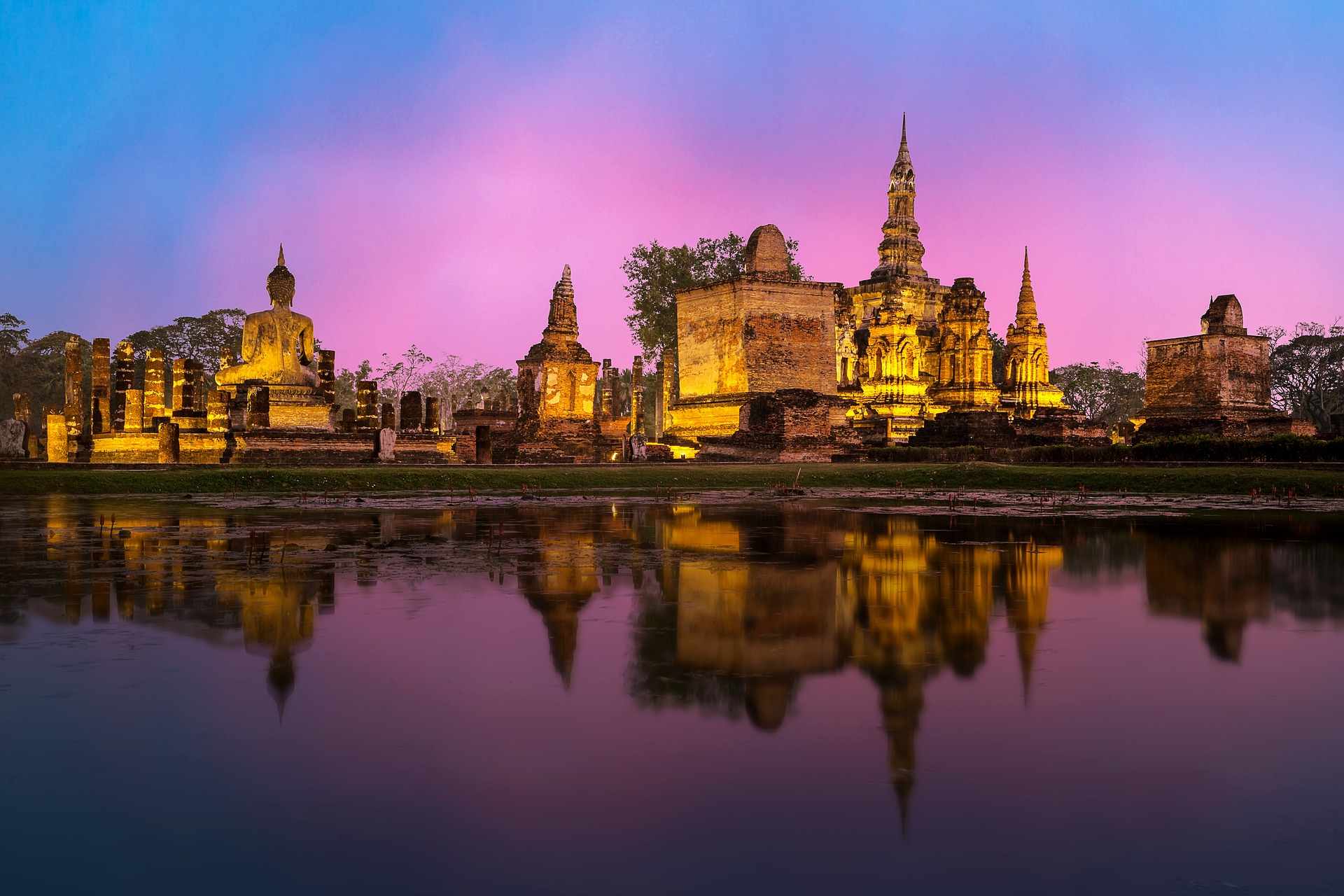Illuminating History and Preserving Heritage
In my country of Thailand, light directly connects knowledge and wisdom with the divine. Faith and light, both intangible elements, have been interwoven through time and this age-old interplay can be observed universally with the literal transference of light onto religious architecture and buildings of heritage.
There are supposedly around 40,000 Buddhist temples or religious stupas throughout Thailand, and each requires a unique and considered approach when it comes to respecting and reflecting the intangible.
As lighting designers, we must be considerate when it comes to illuminating spiritual buildings, we should reflect and respect religious aspects in all their forms. Creative lighting solutions that adhere to heritage conservation is paramount. But how can we ensure that we strike a balance between illuminating the unique character, age, and significance of the structure, whilst respecting the religious principles that come with it?
Strategic sizing
First and foremost, the approach to a lighting scheme depends on the size and setting of the building or monument. In general, the size, weight, and style of luminaries should be carefully chosen to complement the building, wherever they might be positioned around the structure. The fixtures should be as small as possible while achieving the desired light output. Custom designed fixtures may be necessary for ancient stupas to prevent damage to their framework.
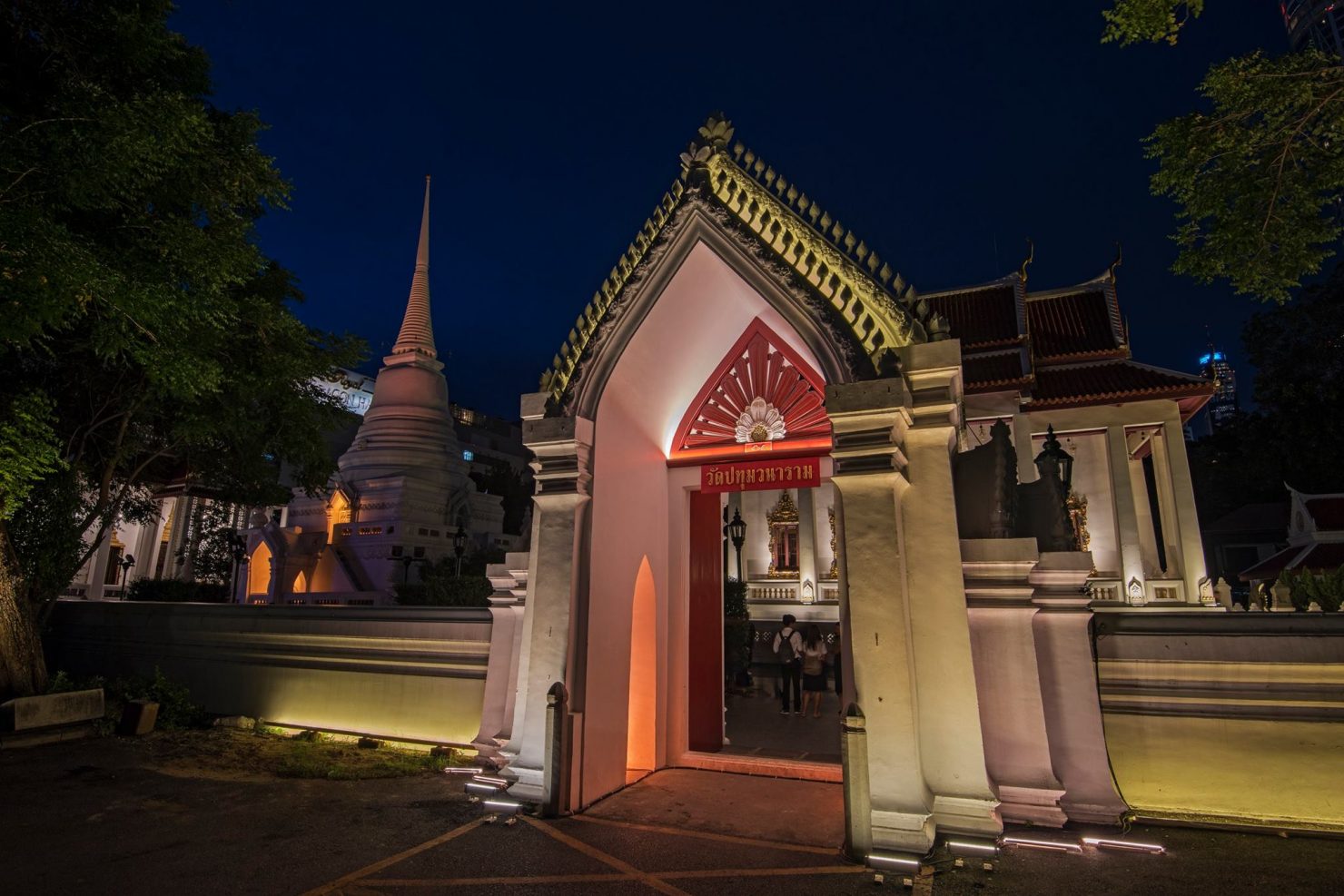
Embrace the Elements
Incorporate the temples natural surroundings into your lighting scheme to create harmony between the building and its environment. Aim to evoke a sense of magic and tranquility during both day and night by utilising soft, warm tones that mimic the gentle glow of the sun, creating a seamless blend between the natural daylight and nighttime hours.
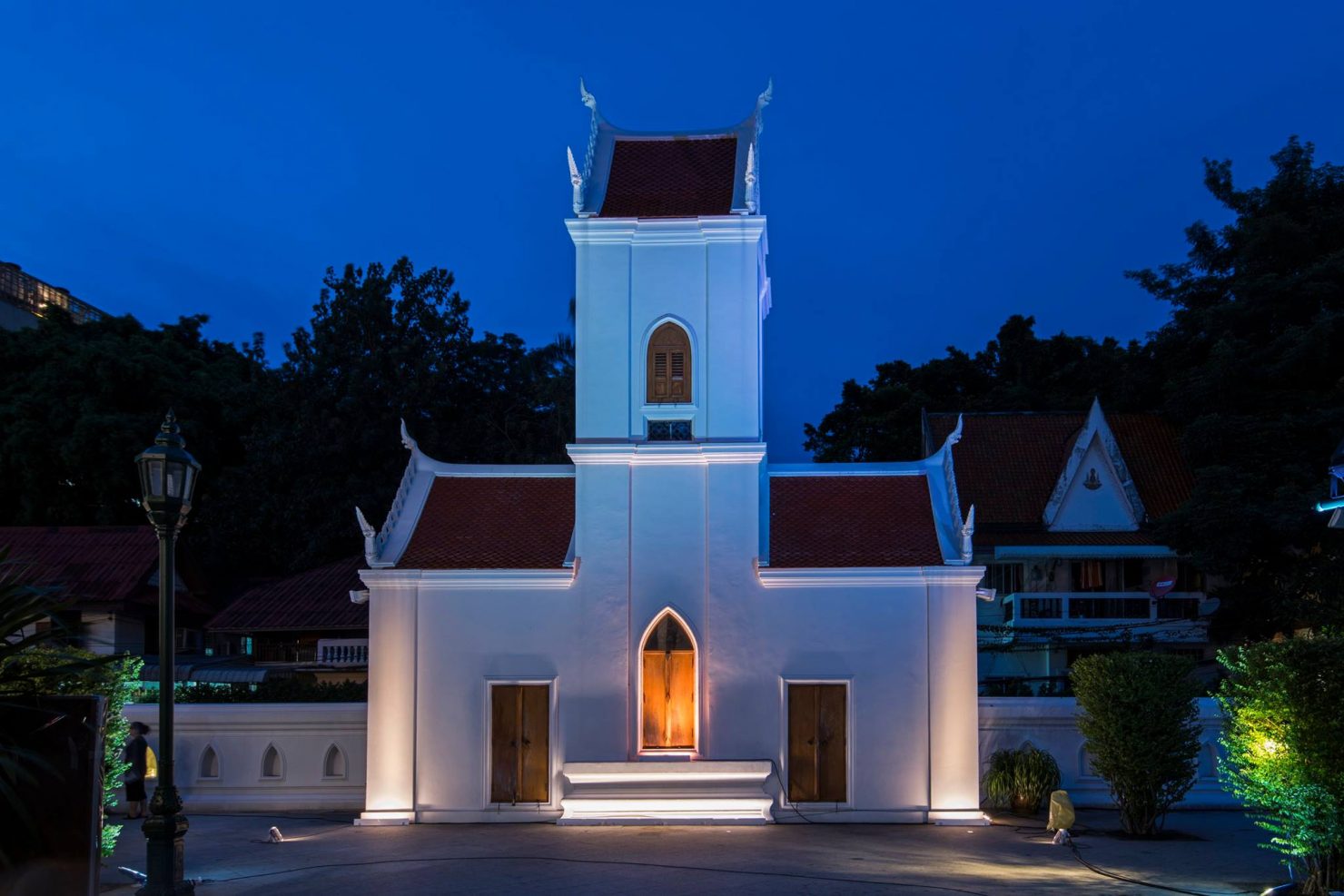
Tranquil Sanctuaries
Within the temple, create pockets of serenity that evolve with the changing light. During the day, gentle rays of sunlight should filter through the windows, casting gentle patterns across the floors and walls. As twilight arrives, introduce warm, diffused lighting that emulates the sun’s setting glow, ensuring a peaceful transition. Consider using dimmable fixtures or concealed lighting to provide an intimate, contemplative atmosphere during evening rituals.
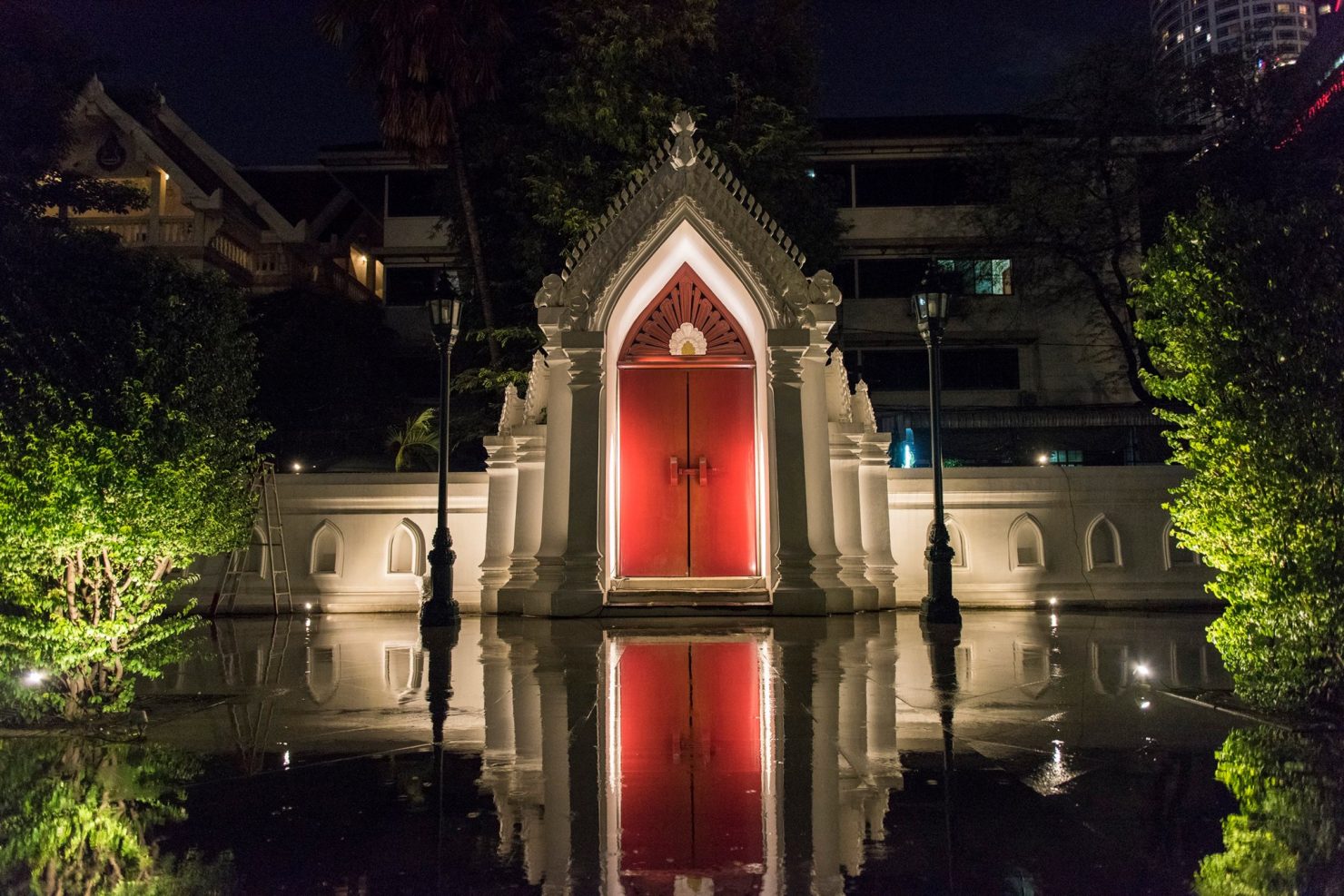
A Dance of Color
To infuse vibrancy and spirituality, experiment with colour schemes that transition seamlessly from day to night. During the day, embrace soft colours that complement the temple’s serene atmosphere. As evening approaches, introduce richer hues, such as deep blues or purples, creating a dramatic and ethereal ambiance. These colours can be incorporated through carefully positioned uplights, wash lights, or even artistic projections.
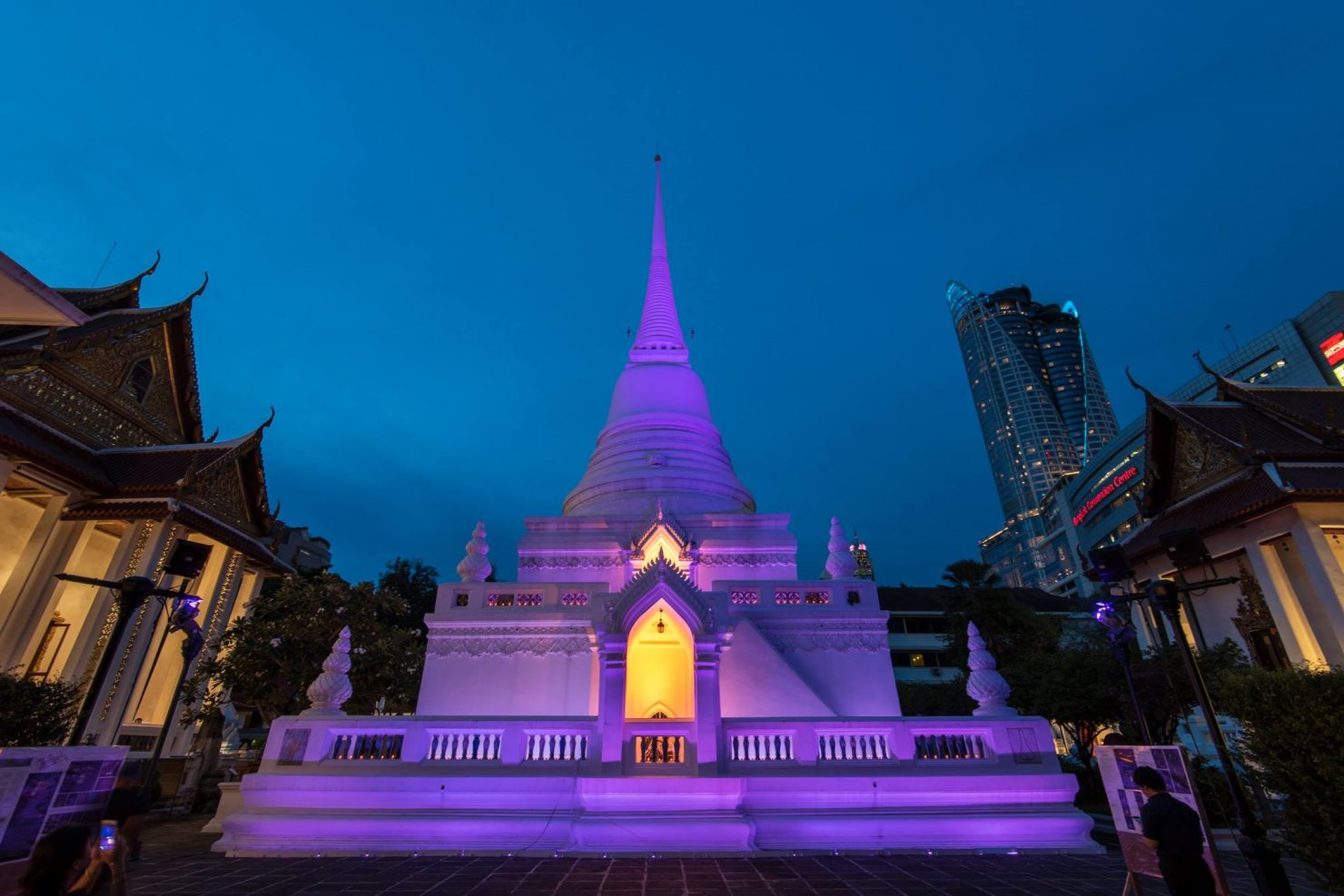
Accentuating Architectural Marvels
The temple’s unique architectural features deserve special attention. During the day, employ strategically placed spotlights that highlight intricate carvings, ornate pillars, and soaring arches. As the sun sets, introduce dynamic lighting elements that illuminate these same features from various angles, casting mesmerizing shadows and creating a captivating interplay between light and shadow.
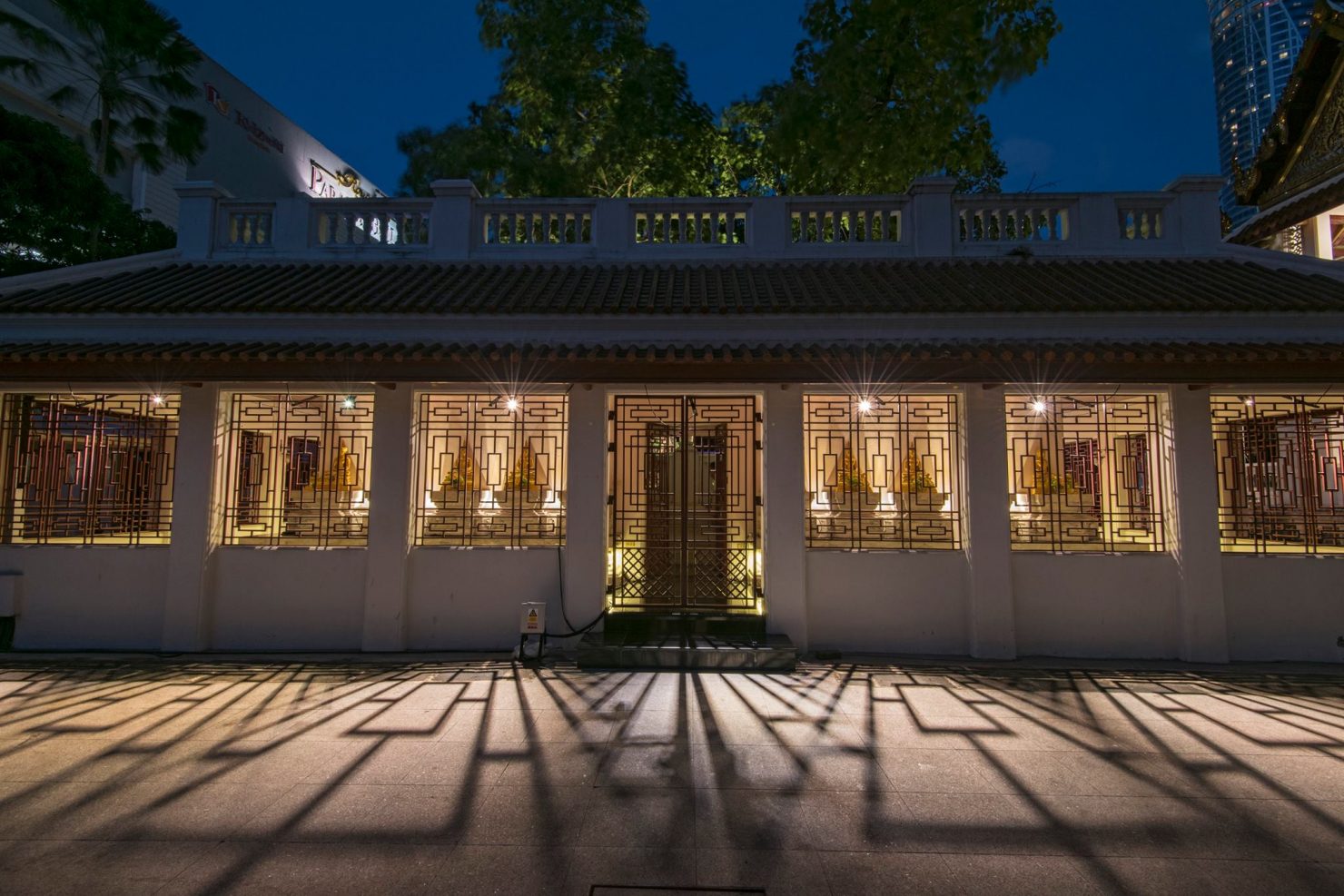
Community Enrichment
These forms of exterior lighting should be employed to not only enhance the environment but also to benefit visitors on a psychological level. Enriching an historic building with a considered lighting scheme can instil a sense of civic pride among the population. It can draw attention to city landmarks for tourists and highlight the local culture in a way that encourages a sense of honour. Decorative lighting of stupas can also raise awareness of religion among nearby communities, instilling the importance of traditional culture and faith.
Designing for these buildings is all about consideration, and ultimately requires a blend of practicality and creativity. Engage with the temple’s unique energy, let light tell the story, and transform the space into a captivating sanctuary that seamlessly adapts to the shifting needs of both day and night.
Images © Light Asia Wat Pathum Wanaram


